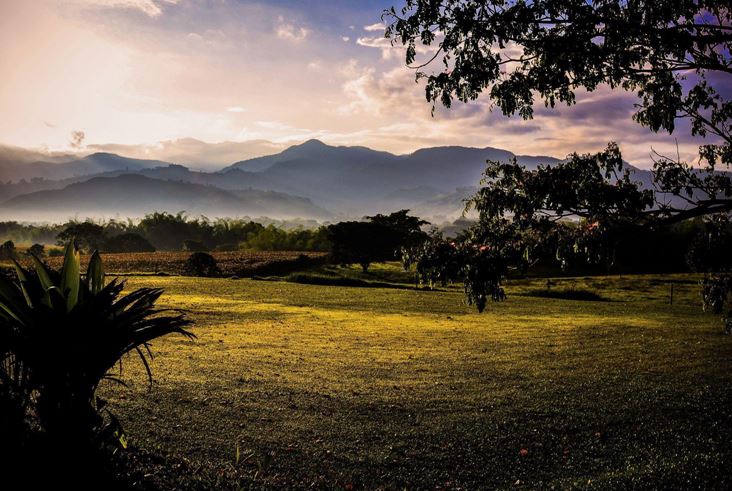Carbon neutrality and coffee
Carbon neutrality is a simple concept: it refers to a project, organization, business, or product that absorbs as much CO2 as it emits.
Carbon emissions have understandably been a topic of debate for businesses around the world in recent years, and coffee is no exception. Naturally, CO2 is created at stages all along the coffee supply chain, from planting and harvest to transport and roasting.
However, green coffee can account for up to 30% of the carbon emissions in the bean-to-cup journey. For example, agriculture inputs like fertiliser can have a significant impact on carbon emissions. Beyond that, untreated wastewater, energy use, and the vehicles used at origin are other factors to consider, as is maritime shipping.
Thankfully, many actors in the coffee industry are implementing strategies to offset or reduce their carbon emissions. Although this starts with streamlining carbon-intensive activities like shipping, there are other, more nuanced methods to leverage, such as regenerative agriculture.
Let’s take a closer look at how else coffee can be carbon neutral, and what Condesa is doing to support carbon neutrality across the wider supply chain.

Why carbon neutrality matters for coffee
Climate change directly affects coffee production, since coffee is typically grown in the Bean Belt between the Tropic of Cancer and the Tropic of Capricorn.
Estimates suggest that as temperatures increase, the amount of land suitable for coffee production could decrease by as much as 50% by 2050, making coffee production even more expensive and forcing farmers to climb higher in search of cooler temperatures.
This is even more problematic when we consider that many of these producers could instead choose to cultivate cash crops which are cheaper and easier to grow. This could cause coffee to become more expensive, as well as potentially threatening global coffee supplies.
Furthermore, coffee-producing countries are already seeing an increase in disruptive and extreme weather patterns because of climate change, as well as erratic rainfall patterns.
As we know, greenhouse gas emissions directly contribute to climate change, and CO2 is one of the primary culprits.

Cutting coffee’s carbon footprint
There are several ways to reduce the carbon footprint of coffee. One of the most popular is the use of “carbon offsetting”. This is where organizations offset their emissions with other initiatives that absorb or sequester CO2 (such as planting a certain number of trees every year, for instance).
But alongside carbon offsetting, there are also a number of ways to reduce CO2 emissions at farm level, too. Using shade trees, for instance, can foster biodiversity on coffee farms, provide better conditions for coffee cherries to develop, and absorb emissions.
Soil fertility is also important. Healthy, fertile soil is better suited to capturing CO2 than soil that has been depleted and neglected after extended periods of intense agriculture. Tilling soil less frequently, rotating crops for soil fertility, and increasing permanent soil coverage can all improve soil health in the long term.
Fertilizers are another key area to consider. While agricultural inputs often help producers grow better coffee, they are also individual products which often have their own CO2 emissions to contend with. Natural fertilizers can be produced without using nearly as much energy, and can reuse waste from nearby communities or other types of agriculture.
This helps to reduce emissions, protects groundwater, and reduces transportation distances, which are all helpful in decreasing the carbon footprint of coffee.

Our commitment to carbon neutral coffee
Condesa sources coffee from ECOM, which has built sustainability into its business practices since the 1990s.
Since 2021, Condesa has worked with EISA, ECOM’s sister organization, and participated in their carbon-neutral program. EISA purchases carbon credits from the voluntary carbon market to offset the emissions of the coffee Condesa purchases. We then calculate these carbon offsets from the weight of green coffee we buy.
Daniel Motta is the Sustainability Manager at EISA. He says: “The concept is really simple. It’s something other companies are doing, like air tickets or events.”
In addition to their work in the voluntary carbon market, EISA has also worked with 600,000 farmers and producers through their Sustainability Management Services program to encourage sustainable initiatives and agricultural best practices.
This training includes topics like pest management, nutrition, and pruning. It also works on infrastructure projects that are important to coffee growing communities, such as wastewater treatment and reforestation.
All these projects can improve carbon emissions and help to minimize the impact that coffee production has on the environment.

Environmental sustainability is incredibly important for the future of the coffee industry. To make sure that the sector can continue to operate sustainably now and for decades to come, we need to do everything we can to minimize the industry’s environmental impact.
At Condesa, we’re committed to achieving these goals and working with producers and stakeholders who share our values. This continues to be a key priority for us as we source outstanding coffee for our roaster partners.

